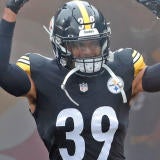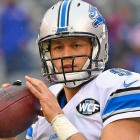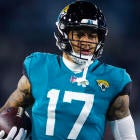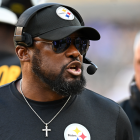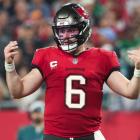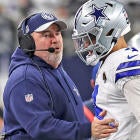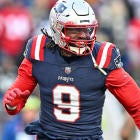It wasn't long ago that the Detroit Lions had the inside track on winning the NFC North and securing a home playoff game. Instead, they lost three straight to fellow NFC contenders (Giants, Cowboys, Packers) to end the season and will travel to Seattle to face the NFC West champion Seahawks in a wild-card game.
- Who: Detroit Lions (9-7) at Seattle Seahawks (10-5-1)
- When: Saturday, Jan. 7, 8:15 p.m. EST (NBC)
- Where: CenturyLink Field, Seattle
- Latest line: The Seahawks are 8-point favorites, according to SportsLine
Putting Earl Thomas' loss into perspective
The Seahawks also enter the postseason on a bit of a downswing. They started 7-2-1 before finishing the regular season 3-3, mostly without star safety Earl Thomas. Thomas missed the first game of his NFL career in Week 12, then returned to play the first 17 snaps of the Seahawks' 40-7 blowout of the Panthers in Week 13 before seeing his season end because of a fractured tibia suffered when he collided with teammate Kam Chancellor.
The difference in the performance of the Seahawks' pass defense before and after Thomas' injury was stark.
SEA w/ Earl Thomas on the field this year: Seven TDs, 10 picks, 77.8 passer rating
— Bill Barnwell (@billbarnwell) January 4, 2017
SEA w/o Earl Thomas: 9 TDs, 1 INT, 99.5 passer rating
That drop was reflected not only in traditional counting stats but also more advanced measures. The Seahawks, perennially one of the top defenses in Football Outsiders' DVOA against both the run and the pass, dropped from fifth in pass defense DVOA prior to Thomas' injury to 30th after it.
Take a look at the following chart, courtesy of Pro Football Focus, which shows how opposing quarterbacks fared when throwing to all areas of the field, broken down by the time during which Thomas was healthy (Weeks 1-11) and when he wasn't (Weeks 12-17).

In Seattle's Cover-3 defense, Thomas is responsible for the "deep middle" of the field. He usually begins the play lined up about 15 yards off the line of scrimmage and covers any pass at that depth or greater, anywhere between the hash marks. Because PFF breaks down its sections of the field into 1o-yard increments, we've shaded the areas 10 yards or more beyond the line of scrimmage in light blue above. This, generally, is Thomas' area of coverage, with his responsibility being greater for the deeper throws than the ones in front of him. (The middle of the field in the short zones is shaded gray simply for readability purposes.)
What immediately jumps out about those blue zones? First of all, opposing quarterbacks completed ONE PASS to the deep middle of the field in the 10 games Thomas was healthy. They only even attempted nine throws to that area, so great is their fear of throwing anywhere in his vicinity. In the six games after he was injured, opposing quarterbacks threw to that area of the field 10 times, completing six.
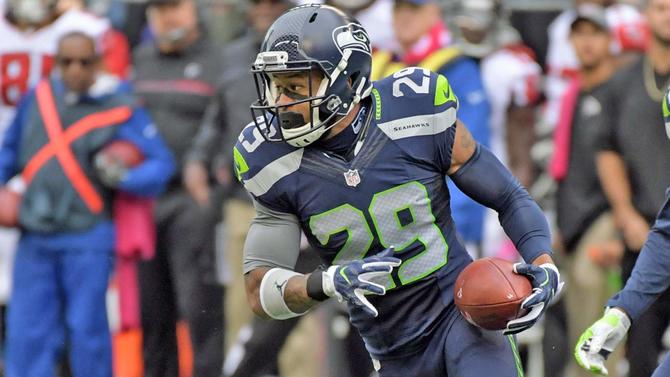
The performance on those throws greatly improved as well. Opposing passers went from going 1 of 9 for 29 yards and a pick when throwing at Thomas, to 6 of 10 for 242 yards, two touchdowns and no picks when throwing to his area after he went down for the season. Quarterbacks were significantly more willing to challenge Steven Terrell, and with pretty good reason.
Their performance on throws directly in front of the area Thomas typically covered (10-19 yards beyond the line of scrimmage, between the hash marks) improved as well. Quarterbacks did not challenge that area of the field quite as often (2.3 times per game, down from 3.7 per game) but their average yards per attempt on those throws jumped from 7.24 to 9.29. That's a significant leap.
Can Matthew Stafford and Co. take advantage?
The operative question, is whether Matthew Stafford and the Detroit receiving corps can take advantage of the newfound weakness of the Seattle pass defense in general -- and its specific weakness against deep throws to the middle of the field.
And there, too, an injury plays a role. Stafford suffered an injury to his right middle finger early in Detroit's Week 14 win over the Chicago Bears. He has worn a splint on the finger and experimented with different kinds of gloves over the four weeks since that point, and his performance has suffered greatly.
Through the Lions' first 12 games, Stafford was playing himself into the MVP conversation. Detroit was 8-4 and he had completed 67.2 percent of his passes at 7.45 yards per attempt, with 21 touchdowns and only five interceptions. Over the Lions' season-ending 1-3 stretch, Stafford's performance declined sharply.

That decline was reflected in Stafford's performance in pretty much all areas, including on deep throws. Prior to his injury, Stafford completed 16 of 44 passes thrown 2o or more yards downfield, per PFF. Those throws accounted for for 689 yards and four touchdowns while none were picked. Lions receivers dropped four additional passes that could have been caught on those plays, so he was accurate on downfield throws 45.5 percent of the time.
Post-injury, Stafford was less accurate and more erratic with his deep tosses. He completed only 7 of 20 such throws, accounting for 262 yards, a touchdown, and two interceptions. The Lions didn't drop any of those throws, so he was accurate only 35 percent of the time he threw the ball deep down the field. Accordingly, his passer rating dropped from 114.8 to 60.4 on such throws.
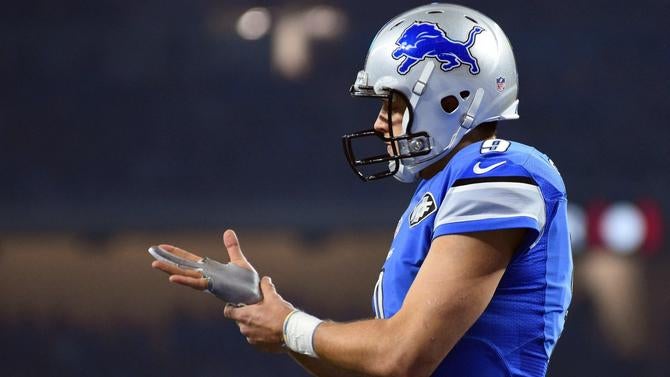
The Lions' passing offense under Jim Bob Cooter has mostly been geared around shorter, quicker throws anyway, but playoff matchups often demand changing course in order to exploit a specific aspect of the opponent's coverages. Unfortunately, Detroit doesn't look well-equipped to take advantage of the Seahawks' newfound vulnerability on deep passes, which means Stafford will have to be ultra-efficient with his short and intermediate throws in order to move the ball down the field.
That, interestingly enough, is a pretty good way to attack the Seattle defense. The Seahawks are often willing to concede short, easy passes in front of their defensive backs and linebackers in favor of protecting against the deep ball, confident that their defenders can come up and make tackles. That strategy has worked extraordinarily well for them at almost all times, but teams with certain kinds of weapons have been occasionally able to take advantage of the natural creases that open in the Cover-3.
The best example of this likely came in Super Bowl XLIX, when Tom Brady completed 37 of 50 passes for 328 yards, four touchdowns, and two picks.
Because of the Cover-3's design, it is often vulnerable to tight ends that can work the seam (the area between the cornerback and safety, who are each responsible for covering a "deep third" of the field). Rob Gronkowski is the best there is at doing that, and he had six catches for 68 yards and a touchdown in the Patriots' victory.
Seattle's corners play closer to the line of scrimmage that typical Cover-3 corners do, but because of their kick-step coverage style, they are sometimes vulnerable to smaller, quicker wideouts that can avoid being jammed at the line of scrimmage, get on top of the route, and snap off a quick break to the inside or outside for a short throw. Julian Edelman and Danny Amendola both fit that description, and they combined for 14 catches for 157 yards and two touchdowns in he Super Bowl.
Seattle's outside linebackers are typically responsible for the covering flat and screen routes, but quicker running backs out of the backfield can beat them to the sideline and a few yards a pop -- or more, if they can turn the corner. Shane Vereen caught an incredible 11 passes in the Super Bowl, and though they only totaled 64 yards, they helped move the chains. Five of those 11 passes went for first downs.
It takes a lot of discipline to just repeatedly complete short passes for 5, 6, 7 yards a pop and not try to make something more happen that isn't there. Even Brady couldn't manage it for the entire game, as he was picked off twice. He did complete a ton of them throughout the game, though, with 25 of his 37 completions gaining fewer than 10 yards. Those short gains may not have moved the needle much individually, but collectively they did move the chains, and they helped the Pats control the ball for 34 of the 60 minutes of game time.

The Lions don't have the Vereen-style running back out of the backfield with Theo Riddick on injured reserve, but they do have a short, quick receiver who can snap off shorter routes and turn the ball up-field in Golden Tate, as well as a big-bodied, athletic tight end that can work the seam in Eric Ebron.
Tate has only played one game against his former Seattle teammates in his career, and they shut him down with only three catches for 29 yards as the Lions fell into an 0-4 hole last year. Ebron was still getting inconsistent snaps at that point, and he was held to two grabs for 22 yards. A few weeks later, the Lions made a switch at offensive coordinator and promoted Cooter into the role. Tate and Ebron have been bigger parts of the offense since then (particularly this year, after the Lions lost Calvin Johnson to retirement), and they'll likely have to play starring roles on Saturday if the Lions are to come away with a win.








